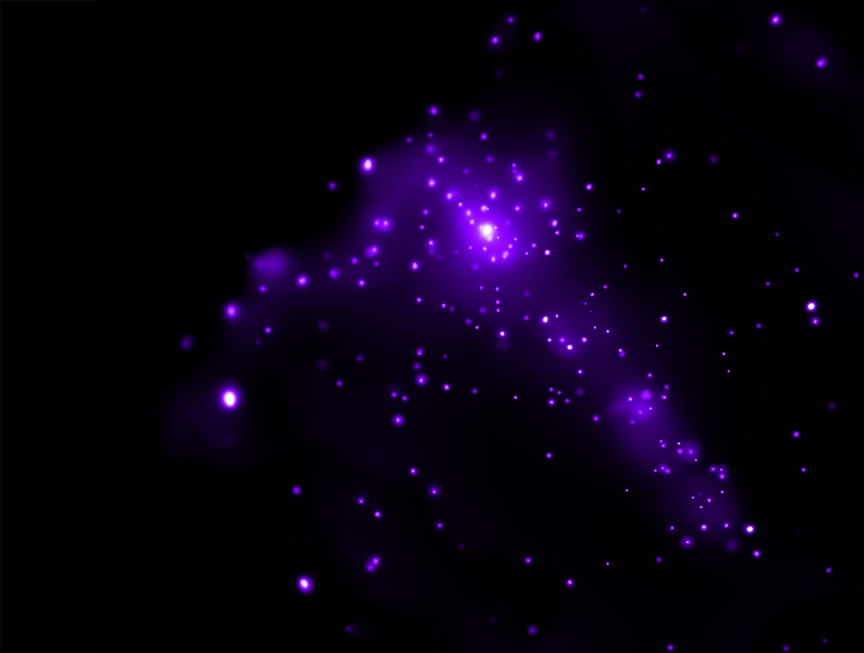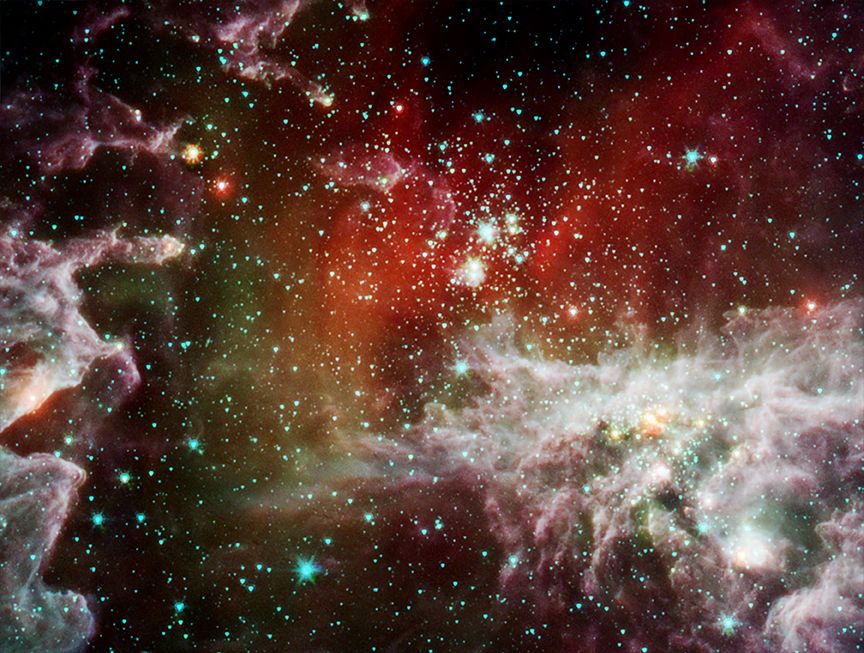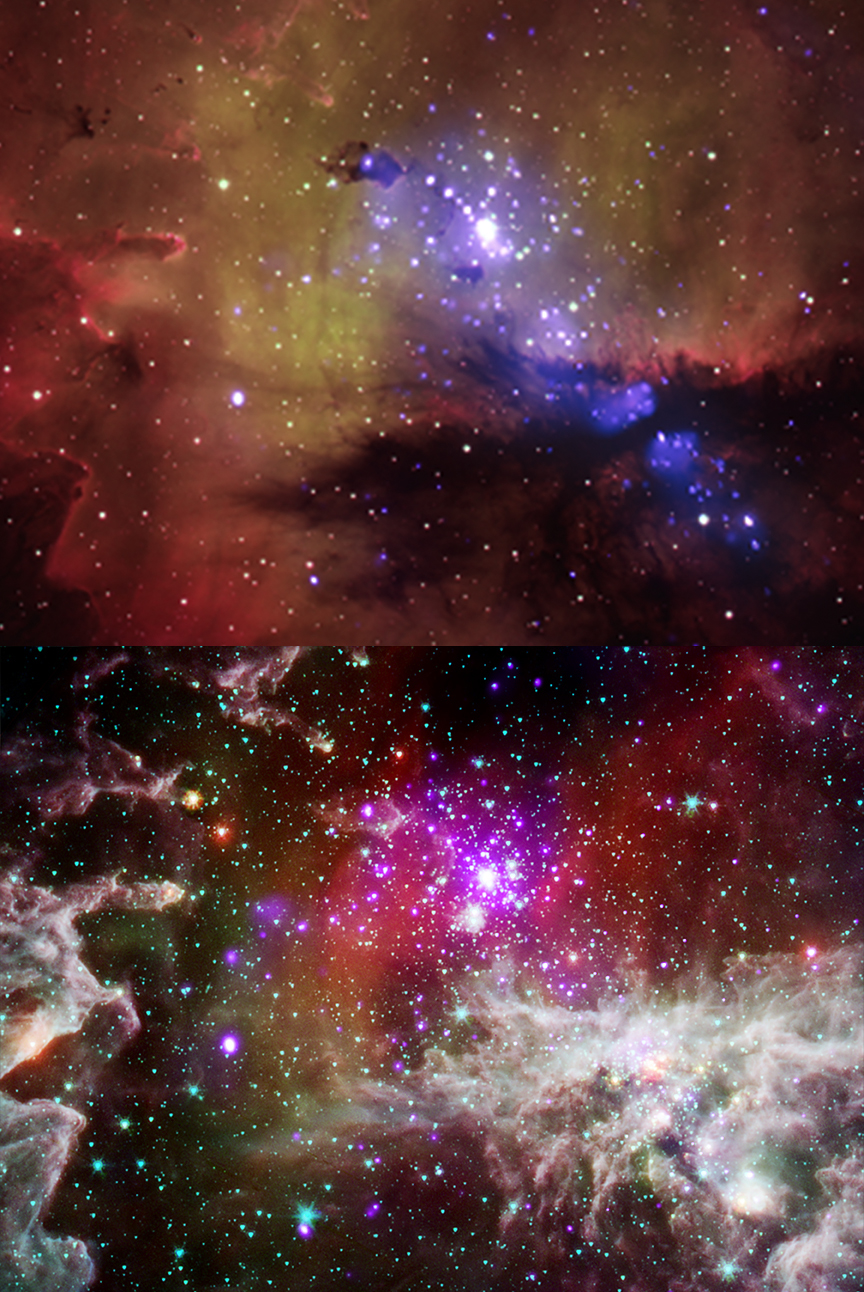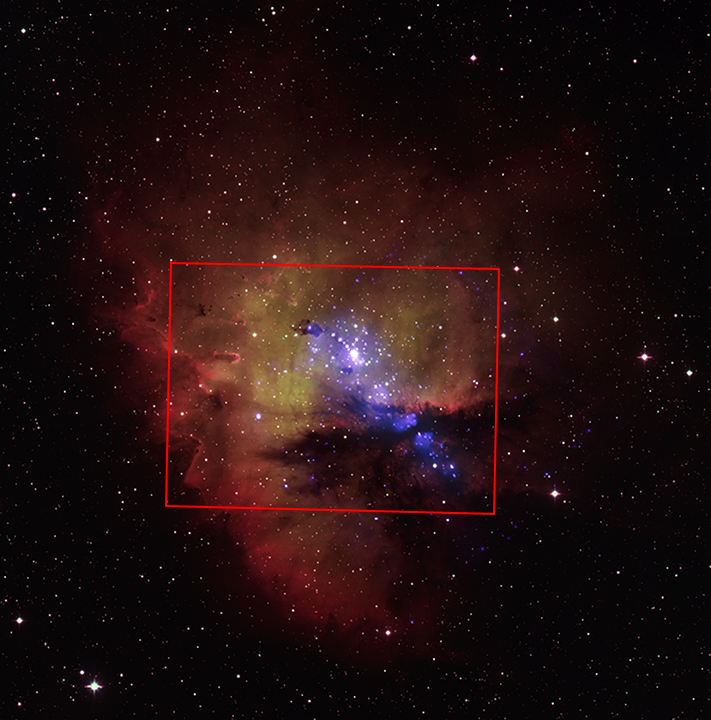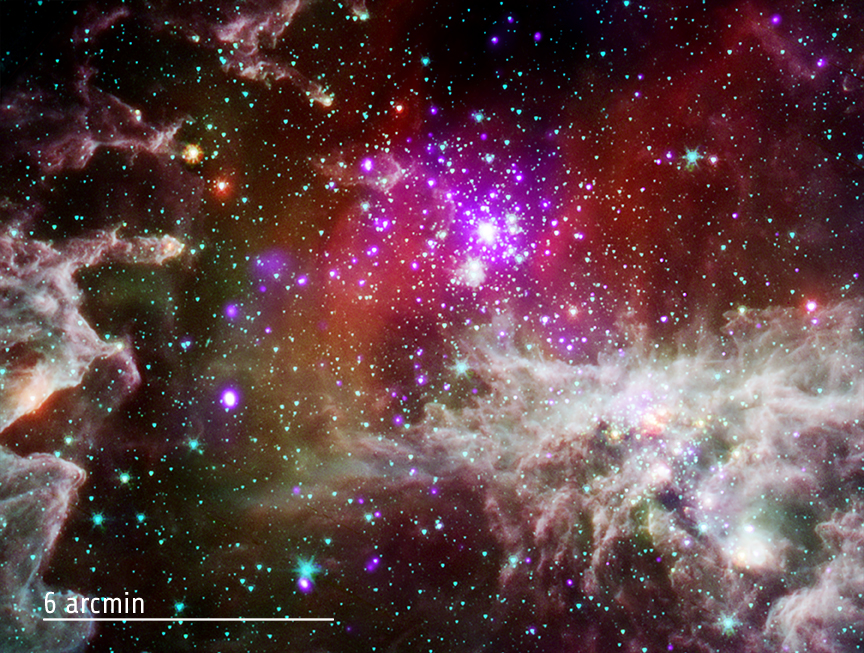Difference between revisions of "Chandra"
| (4 intermediate revisions by the same user not shown) | |||
| Line 1: | Line 1: | ||
=Data information from Chandra= | =Data information from Chandra= | ||
| − | + | Since its launch on July 23, 1999, the Chandra X-ray Observatory has been NASA's flagship mission for X-ray astronomy, taking its place in the fleet of "Great Observatories." | |
| − | |||
| − | + | Who we are: | |
| − | What we do | + | NASA's Chandra X-ray Observatory is a telescope specially designed to detect X-ray emission from very hot regions of the Universe such as exploded stars, clusters of galaxies, and matter around black holes. Because X-rays are absorbed by Earth's atmosphere, Chandra must orbit above it, up to an altitude of 139,000 km (86,500 mi) in space. The Smithsonian's Astrophysical Observatory in Cambridge, MA, hosts the Chandra X-ray Center which operates the satellite, processes the data, and distributes it to scientists around the world for analysis. The Center maintains an extensive public web site about the science results and an education program. |
| − | + | ||
| − | + | What we do: | |
| − | What we are excited about | + | Chandra carries four very sensitive mirrors nested inside each other. The energetic X-rays strike the insides of the hollow shells and are focussed onto electronic detectors at the end of the 9.2- m (30-ft.) optical bench. Depending on which detector is used, very detailed images or spectra of the cosmic source can be made and analyzed. |
| − | + | ||
| − | + | What we are excited about: | |
| + | Chandra has imaged the spectacular, glowing remains of exploded stars, and taken spectra showing the dispersal of elements. Chandra has observed the region around the supermassive black hole in the center of our Milky Way, and found black holes across the Universe. Chandra has traced the separation of dark matter from normal matter in the collision of galaxies in a cluster and is contributing to both dark matter and dark energy studies. As its mission continues, Chandra will continue to discover startling new science about our high-energy Universe. | ||
| Line 24: | Line 24: | ||
=Comparison of Optical and Infrared Images of NGC 281= | =Comparison of Optical and Infrared Images of NGC 281= | ||
| − | + | These following two graphics compares optical and infared images of the central region of NGC 281, known informally as the "Pacman Nebula". In the optical image the "mouth" of the Pacman character appears dark because of obscuration by dust and gas, but in the infrared Spitzer image the dust in this region glows brightly. X-ray data from Chandra is shown in purple in both. | |
| − | |||
| − | |||
| − | |||
| − | =NGC281 | + | =NGC281 Comparison= |
[[File:ngc281_compare.jpg]] | [[File:ngc281_compare.jpg]] | ||
| + | =NGC281 optical full field with 2011 release= | ||
| + | [[File:ngc281_old.jpg]] | ||
| + | |||
| + | The optical and X-ray image shows a large-field optical image with the Chandra data (as released in 2007). The red box represents the smaller field of view for the 2011 release. | ||
=NGC281 with scale= | =NGC281 with scale= | ||
[[File:ngc281_scale.jpg]] | [[File:ngc281_scale.jpg]] | ||
| + | For more information on the Chandra mission, xray astronomy, and pictures of other objects visit: http://chandra.harvard.edu/field_guide.html | ||
| + | --- | ||
Retrieved from: http://chandra.harvard.edu/photo/2011/ngc281/more.html | Retrieved from: http://chandra.harvard.edu/photo/2011/ngc281/more.html | ||
Latest revision as of 16:02, 16 March 2013
Contents
Data information from Chandra
Since its launch on July 23, 1999, the Chandra X-ray Observatory has been NASA's flagship mission for X-ray astronomy, taking its place in the fleet of "Great Observatories."
Who we are: NASA's Chandra X-ray Observatory is a telescope specially designed to detect X-ray emission from very hot regions of the Universe such as exploded stars, clusters of galaxies, and matter around black holes. Because X-rays are absorbed by Earth's atmosphere, Chandra must orbit above it, up to an altitude of 139,000 km (86,500 mi) in space. The Smithsonian's Astrophysical Observatory in Cambridge, MA, hosts the Chandra X-ray Center which operates the satellite, processes the data, and distributes it to scientists around the world for analysis. The Center maintains an extensive public web site about the science results and an education program.
What we do: Chandra carries four very sensitive mirrors nested inside each other. The energetic X-rays strike the insides of the hollow shells and are focussed onto electronic detectors at the end of the 9.2- m (30-ft.) optical bench. Depending on which detector is used, very detailed images or spectra of the cosmic source can be made and analyzed.
What we are excited about: Chandra has imaged the spectacular, glowing remains of exploded stars, and taken spectra showing the dispersal of elements. Chandra has observed the region around the supermassive black hole in the center of our Milky Way, and found black holes across the Universe. Chandra has traced the separation of dark matter from normal matter in the collision of galaxies in a cluster and is contributing to both dark matter and dark energy studies. As its mission continues, Chandra will continue to discover startling new science about our high-energy Universe.
The following images are retrieved from: http://chandra.harvard.edu/photo/2011/ngc281/more.html with additional credit due to: X-ray: NASA/CXC/CfA/S.Wolk; IR: NASA/JPL/CfA/S.Wolk
X-ray & Infrared Images of NGC 281
These images of NGC 281 show X-ray data from Chandra and infrared observations from Spitzer. The high-mass stars in NGC 281 drive many aspects of their galactic environment through powerful winds flowing from their surfaces and intense radiation that heats surrounding gas, "boiling it away" into interstellar space. This process results in the formation of large columns of gas and dust, as seen on the left side of the image. These structures likely contain newly forming stars. The eventual deaths of massive stars as supernovas will also seed the galaxy with material and energy.
X-Ray
Infrared
Comparison of Optical and Infrared Images of NGC 281
These following two graphics compares optical and infared images of the central region of NGC 281, known informally as the "Pacman Nebula". In the optical image the "mouth" of the Pacman character appears dark because of obscuration by dust and gas, but in the infrared Spitzer image the dust in this region glows brightly. X-ray data from Chandra is shown in purple in both.
NGC281 Comparison
NGC281 optical full field with 2011 release
The optical and X-ray image shows a large-field optical image with the Chandra data (as released in 2007). The red box represents the smaller field of view for the 2011 release.
NGC281 with scale
For more information on the Chandra mission, xray astronomy, and pictures of other objects visit: http://chandra.harvard.edu/field_guide.html ---
Retrieved from: http://chandra.harvard.edu/photo/2011/ngc281/more.html
